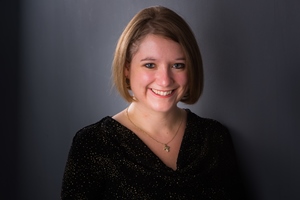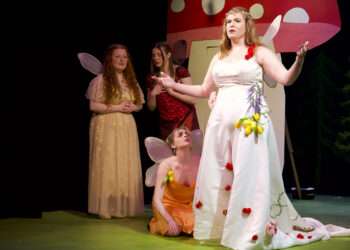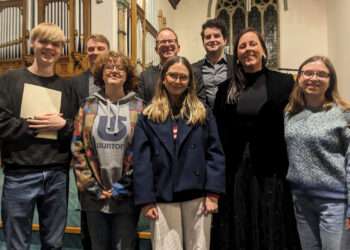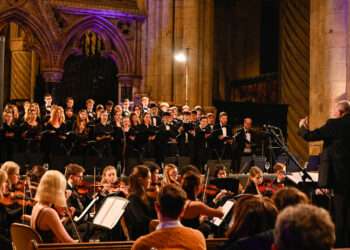 In the back of the programme for the Durham Cathedral summer organ recital series, there’s a page giving the specifications of the organ, with a long list of stops; some have straightforward names like cello, flute and tuba so that you can easily guess what sort of sound they might make; some have fancier names but still give you some clue – the contra posaune, viole d’amour or the vox humana and angelica, whilst others are, to the uninitiated like me, incomprehensibly exotic – double ophicleide, nazard, salicional. Whatever they all are, Francesca Massey, in this the last of the cathedral’s summer recitals, demonstrated how to blend and mix this massive selection of colours to create a fascinating and detailed musical landscape.
In the back of the programme for the Durham Cathedral summer organ recital series, there’s a page giving the specifications of the organ, with a long list of stops; some have straightforward names like cello, flute and tuba so that you can easily guess what sort of sound they might make; some have fancier names but still give you some clue – the contra posaune, viole d’amour or the vox humana and angelica, whilst others are, to the uninitiated like me, incomprehensibly exotic – double ophicleide, nazard, salicional. Whatever they all are, Francesca Massey, in this the last of the cathedral’s summer recitals, demonstrated how to blend and mix this massive selection of colours to create a fascinating and detailed musical landscape.
Wagner’s overture to Die Meistersinger von Nűrnberg gave us a quick tour of the organ’s orchestral capabilities, in sharply delineated colours – strings, winds and brass all came through clearly in a cheerfully robust performance, whilst César Franck’s Choral No 1 allowed Francesca to show off some of the organ’s more subtle and interesting registrations, including something wonderfully fragile and tremulous in the quieter legato passages; it sounded like singing, probably more human than angelic. Franck’s counterpoint came through very clearly too, with each line clearly picked out even in the louder sections.
On arriving at the cathedral, I had to make the tricky decision of where to sit: do I go for the total immersion experience in the quire, or do I take the sensible option of sitting in the nave and letting the sound blend at a distance. For most of the recital, being in the quire was great, and I probably heard more detail than I would have done in the nave, but for the three Bach chorale preludes (BWV 669-671) a little distance might have been better. In her informative introduction to the recital, Francesca explained that these three pieces, that together form a musical description of the Trinity, are all based on plainsong melodies, but whilst it was useful to have them played so clearly, in the first two movements, which were played in a soft chamber-organ registration, the chant overshadowed Bach’s delicate elaborations. For the last of the three though, Kyrie, Gott heiliger Geist, the chant was safely out of the way in the bass, and everything was turned up a notch, culminating in one of Bach’s crazy chromatic sequences, and Francesca gave plenty of time to let us enjoy each anguished twist of the harmony.
The piece that particularly drew me to tonight’s recital was Judith Weir’s Wild Mossy Mountains. Francesca played this during our Durham Singers concert at Ushaw in June, and I’d been hoping that she would give it another outing on the cathedral organ at some point. It’s a wonderfully descriptive work, evoking the majesty of the Scottish mountains, but also dotted with small details. In Ushaw, what came across was grandeur and noise and just a bit of terror: this time it sounded completely different, much softer, more rounded and affectionate, with more intricate detail and ending on a truly triumphant major chord.
This year the organ recital series has been marking the 100th anniversary of Max Reger’s death, with pieces by him in each programme, so as Francesca noted, it was appropriate that his music should end the season. She also said that in her opinion the Sonata No 2 is the best of his sonatas, and it sounded as if she was enjoying herself playing it, particularly in the rhythmic complexities of the first movement and in the cheerful fugue that ends it.








